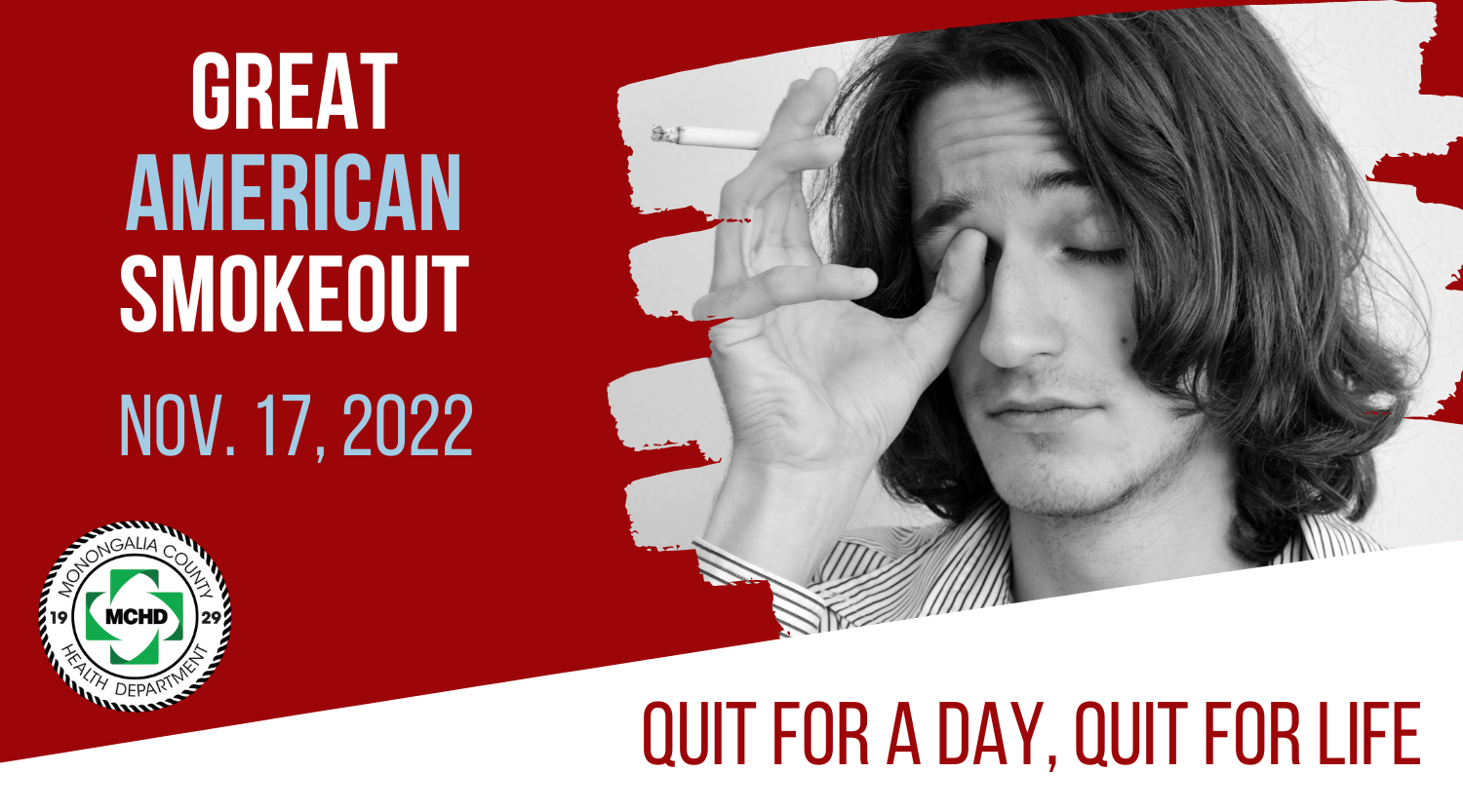It's the Great American Smokeout!

Nov. 17, 2022
By Mary Wade Burnside
When my dad quit smoking, he put the “cold” in cold turkey. After smoking for about 25 years, he got an upper respiratory virus and put down the cigarettes for the duration of his sickness. In that short time frame, he completely lost the urge and never started back up. It ended up being a pretty easy way to quit, considering the immensely powerful addictive qualities of nicotine.
According to the Centers for Disease Control and Prevention, more people in the United States are addicted to nicotine than to any other drug. The CDC also notes that smoking is a risk factor for getting a more severe case of COVID-19. So if you are thinking about quitting, now is a really good time to try. And luckily, there are resources available to help you, as well as an event to provide motivation. Coincidentally, my dad quit smoking around 1977, the same year the Great American Smokeout began. Created and promoted by the American Cancer Society, the Great American Smokeout, held on the third Thursday of November — Nov. 17 this year — is a simple idea.
Encourage people to give up smoking for just one day. If they’re lucky, they’ll feel better and see that it’s doable. And maybe they will not smoke the next day, and the next. And maybe a week later, on Thanksgiving, that turkey dinner will taste a little bit better, because smoking dulls your taste buds. As the American Cancer Society points out: 20 minutes after quitting, your heart rate and blood pressure drop. After 12 hours, carbon monoxide levels in your blood drop to normal. After two weeks to three months, circulation improves and lung function increases. After one to nine months, coughing and shortness of breath decrease. Cilia start to regain function in your lungs, increasing their ability to clean the lungs and reduce the risk of infection. If you want to quit, there is help out there beyond the promise of a healthier body and a tastier holiday meal.
The West Virginia Tobacco Quitline changed vendors a few years ago and services have been more accessible. Now participants can register via a website, saving the time of calling and maybe having to wait for a call back. The individual is assigned a coach, who offers unlimited coaching calls as well as stop-smoking products, the scope of which depends on insurance.
Anyone who has insurance seeking Quitline help is considered underinsured, because that means the person’s insurance doesn’t offer another cessation program. The West Virginia Bureau for Public Health handles clients who are underinsured or uninsured. These clients receive an eight-week supply of nicotine patches, lozenges or gum, delivered in four shipments, in addition to coaching calls. A client can enroll once every six months. Medicaid clients receive a smoking cessation prescription such as Chantix via a physician prescription. Four coaching calls are included for everybody to assist during the quitting process, as well as unlimited reactive coaching calls. The first coaching call includes questions about the client’s smoking habits. This allows the program to be tailored to each individual.
To get started, go online or call 1-800-QUIT-NOW. Maybe by the time the next Great American Smokeout rolls around next year, you will be celebrating how your risk of coronary heart disease is half that of someone who still smokes, and your heart attack risk will have dropped dramatically. And the Thanksgiving turkey will taste really great, too.
Mary Wade Burnside is the public information officer at Monongalia County Health Department.